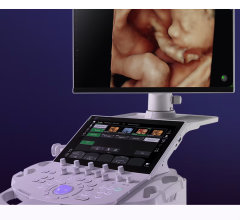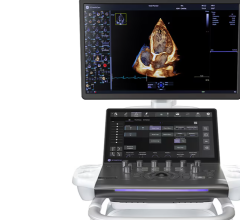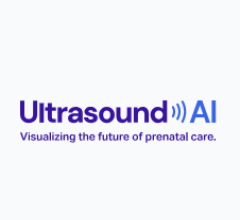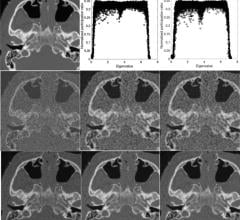One of my favorite movies is “Apollo 13.” For those of you who have not had the privilege of seeing this awe-inspiring movie, you should take the time to do so.
Not only does the story line fit well with the current challenges facing the imaging industry, but it also speaks to the importance of technology. Isn’t’ it funny how technology can offer us so much all at once? It can yield incredible and groundbreaking results yet be dangerous and costly – all at the same time.
In this nonfictional story, the crew of four flies off with every intention of making it to the moon. But due to one faulty wire, they became stranded and scared to death floating in space. In the end, it was the ingenuity of the engineers back on earth that fixed one problem after another and returned all the astronauts home safely. To really understand the gravity of the issues they faced and how they overcame them, one must see the movie.
So how does this event apply to outpatient imaging? NASA enjoyed many successful years and some tragic incidents on its way to beating out Russia and expanding into new areas to emerge as leaders in space. However, a bloated budget, tragic space shuttle accidents and a deteriorating space station, among other mishaps, forced them to rethink their “go–it-alone strategy.”
There were also some geopolitical events that have eased tension between the various countries, but at some point in time, both Russia and the U.S. realized that they could gain much more by working together, standardizing protocols and sharing information. By doing so, money, lives and technological advancements were occurring at a much faster rate.
Leaf Through NASA Playbook
The diagnostic industry should learn from such an example. Outpatient imaging centers and vendors must take a page out of the NASA playbook if we are going to beat the Deficit Reduction Act (DRA). Yes, many centers are competitors, but if as an industry we are going to cut costs we must ultimately become integrated and simplify our business. Overtime, oversaturated markets and rapidly declining reimbursements have taken their toll on this industry and everyone is looking to information technology for a quick fix. But the advancement better known as RIS/PACS might be akin to the Apollo 13 circumstance.
Spending hundreds of thousand of dollars on systems that never really worked correctly or required extensive maintenance have swallowed up the bottom lines of many outpatient centers. Hardware, software, maintenance agreements and T-1 lines all tell a tale of heartache.
However, there really is a fix. By working together and collaborating to develop standardized interfaces using referring physicians’ electronic medical record systems (EMR), we can start to see the true value. A Web portal/PACS that speaks to any physicians’ EMR – regardless of vendor – would save this industry millions of dollars. The FDA compression software that can send patient images that are of “diagnostic quality” would save the outpatient industry’s bandwidth issues alone.
It is hard to get to this point when today, competing RIS/PAC vendors are yet to work to allow their systems to interface with each other. I worked with a center that boasted a well-run front-end system but experienced challenges with their PACS. They purchased a new PACS and after six months, the interface is still not complete. The frustration levels at the center level are escalating through the roof.
As an industry, if we are to ever significantly reduce filming and storage costs, we must work as a team with EMR vendors now as they begin placing these systems in referring physicians’ offices.
If we are able to successfully achieve this interaction, the benefits are numerous. The foremost benefit will be realized by patients. Greater integration between RIS/PACS and EMR vendors will ensure a higher quality of care as imaging exams – including key images and reports – are made available to providers within the EMR.
• Providers with an image-enabled EMR will no longer need to learn how to use myriad Web portals and CD formats to access the imaging exams of their patients. If EMR vendors can build systems to receive the results produced by PACS, then referring physicians spend more time reviewing imaging results and less time fumbling with multiple logins and Web portal interfaces.
• If providers can import key images and reports from patient’s imaging exams, then the provider will be less likely to order redundant exams. This will reduce unnecessary imaging center visits for patients and save costs for the payers.
• Delivering imaging results directly from the imaging center to the referring physician's EMR will improve the efficiency of imaging center operations. Imaging center staff will spend less time chasing referring physicians with faxes of results, spend less time explaining the operations of Web portals and CDs and spend less money on the printing of film.
I believe the go-forward goals for success in today’s competitive and volatile imaging industry must be to seize every possible opportunity to use technology to the fullest and to our every advantage. It seems to me that while the DRA effects may be here for the long haul, the rapid advancements in technology can help overcome the burden.
Steven R. Renard is a diagnostic imaging and radiology industry consultant with nearly 15 years of related experience, primarily in imaging center operations. He is the former president and chief operating officer of Encino, CA-based Liberty Pacific Medical Imaging, an owner and operator of diagnostic imaging centers, primarily in California. Renard is a published author, frequently featured in “Outpatient Business Strategies,” and an industry speaker.


 November 03, 2025
November 03, 2025 









